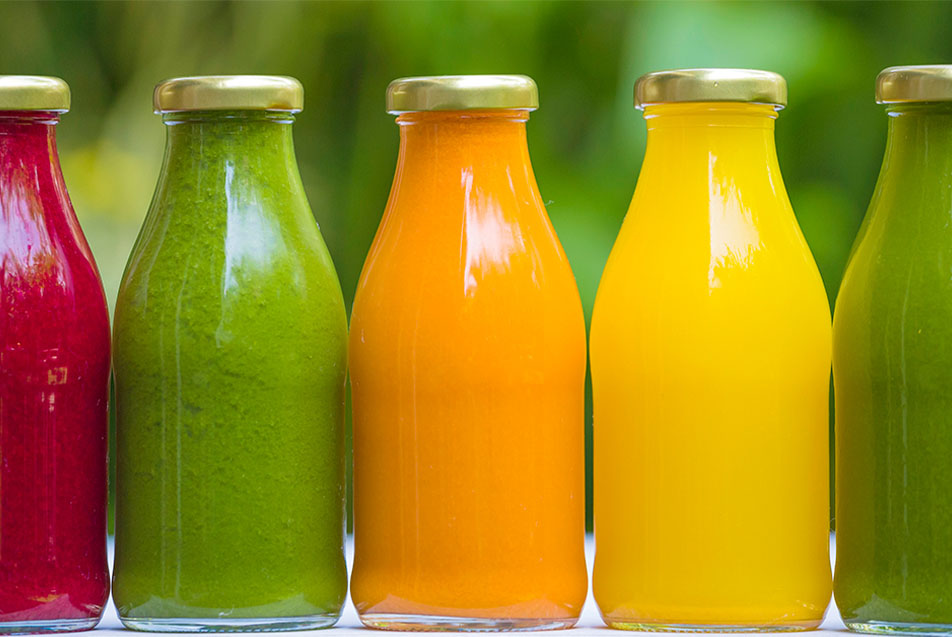A lot of people make adjustments to their diet during the first month of the year. If a juice cleanse is on your list, you’ll want to read these pointers from Christine Sorg, RDN, CD, registered dietitian nutritionist, Parkview Sports Medicine.
Q: Is juicing healthy?
There are a lot of different definitions of “juicing”. My idea of juicing is combining fruits and/or vegetables in a juicer or blender to break down these foods into a liquid form. By this definition, juicing can be a positive way to add more fruits and vegetables into your daily meal plan. Fruits and vegetables contain so many important nutrients that many people are lacking, such as folate, magnesium, potassium, vitamins like A, C, and K, antioxidants and phytochemicals.
Juicing can encourage the addition of vegetables that you (or your family members) might not otherwise eat, such as sweet potatoes, kale and spinach, but ideally, I recommend aiming to get your daily intake of fruits and veggies from whole foods, whether they are canned, frozen or fresh. The act of smelling, tasting, and chewing our fruits and vegetables can help with our overall health and well-being. Juicing can be a good way to hide foods our children might not otherwise eat, but it is also important to offer those same foods as whole foods for them to learn and discover the taste, texture, and smells and, hopefully, determine that they really do like them!
Also, a word of caution, some juice recipes add unnecessary sugars like sugar, honey, maple syrup or molasses. It’s always better to opt for the whole fruit and skip the sugar.
Q: Are juice cleanses safe?
A juice detox, or cleanse, is when only juice is consumed, in place of solids, for a set period of time. These cleanses don’t provide all the nutrients needed in a diet. They contain very small amounts of protein and fat, and may not offer sufficient vitamin D, calcium and iron. Eating fruits and vegetables only is not considered a balanced diet. And it doesn't detoxify your body, because your body already naturally does this. The body performs "detoxification" around the clock while utilizing the nutrients we consume. When I think of dietary changes to promote detoxification, I think of removing processed foods and foods that may cause some sensitivities. Try implementing a plant-based diet containing whole fruits, plenty of water, nuts, seeds, and lean proteins such as fish and chicken. Also, incorporate a daily exercise plan. Movement helps with so many areas of the body!
Q: Does juicing change the nutritional value of the food?
If the recipe calls for the skin and pulp to be removed, this can reduce the amount of nutritious content. If you use a blender, and leave the pulp and skin on the produce, the juice will contain more fiber. It does not alter the vitamins and minerals, which actually work together to aid in absorption. Food combinations can be key. For example, consuming vitamin C-rich foods with iron-rich foods, such as peppers with grilled chicken, aids in the absorption of iron. Fat-soluble vitamins such as vitamin A and E found in fruits and vegetables require some healthy fat for absorption. Inadequate intake of healthy fats, such as olive oil, nuts, seeds, and fatty fish, could lead to deficiencies of these vitamins.
Q: Are some recipes better than others?
The best recipes depend on the person. If they have a medical condition, such as diabetes or kidney disease, they have to be thoughtful about the types of fruits and vegetables they’re juicing. They might need to limit nutrients such as carbohydrates, potassium and phosphorus. Recipes that are mostly fruits, may contain a high number of calories which can lead to weight gain. For someone with no medical conditions, I would encourage using a variety of colorful fruits and vegetables in their daily intake. Aim for one juice recipe a day, with 5-9 servings of whole fruits and vegetables to get on the right path.
Juices can be a smart tool for combatting illness, too. For example, a quick search online for juice recipes to fight the flu turned up one juice containing blueberry, strawberry, kiwi and peppermint, and another with apple, carrot, kale, red bell pepper, cilantro and collard greens. Including both recipes in a balanced meal plan would be a great recipe for fighting the flu in general.




